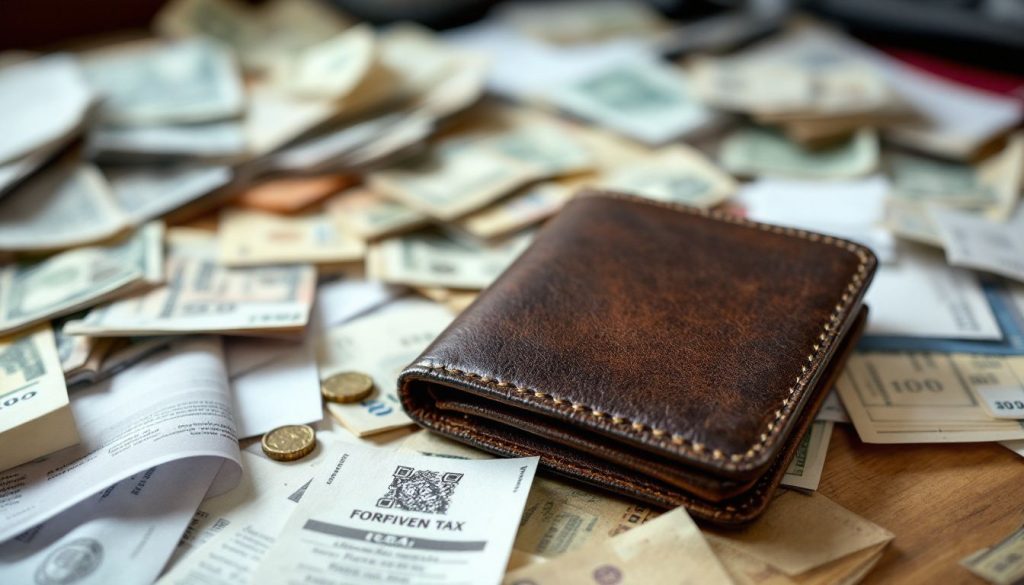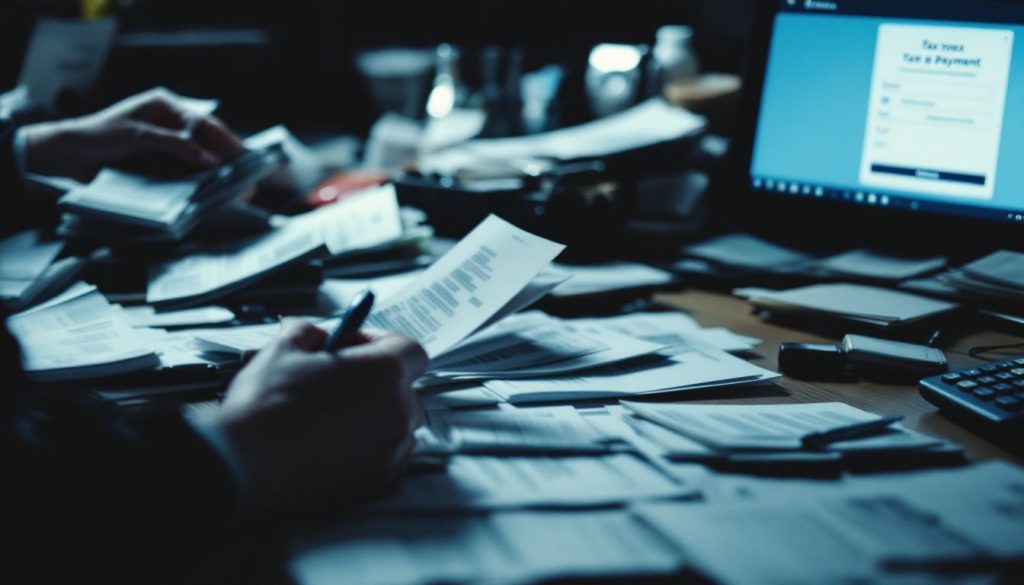Dealing with debt can feel overwhelming. One important fact is that bankruptcy in Canada helps clear certain debts, including bankruptcy CRA debt. Our article will show you ways to manage or get rid of your tax debts through various options.
Keep reading to learn more!
Key Takeaways
- Bankruptcy in Canada can clear CRA debts. You must follow a legal process and talk to a trustee.
- Consumer proposals let you repay only part of your tax debt. The CRA must agree to this plan.
- Professional help is important. Companies like Rumanek & Company offer guidance on dealing with CRA debts and bankruptcy.
- There are alternatives to bankruptcy, like consumer proposals, debt settlement, and credit counseling. Each has pros and cons.
- Keep track of all debt documents and get advice early if struggling with tax debts to avoid bigger problems.
Understanding Bankruptcy and CRA Debt Relief in Canada
Bankruptcy can help Canadians manage CRA debt. It is key to know your options and rights in this process.
Exploring your options
Exploring your options is key when dealing with CRA debt in Canada. Knowing your choices can help you find the best path forward.
- Understand Your Rights: As a debtor, you have rights. You can seek discharge from debts under the Bankruptcy and Insolvency Act. Knowledge of these rules helps you make informed decisions.
- Consider Consumer Proposals: This option allows you to repay tax debts over time. The CRA accepts consumer proposals as a way to settle debt for those unable to pay immediately. It gives some relief while avoiding full bankruptcy.
- Seek Professional Help: Contact a trusted professional or financial advisor for guidance. Many businesses, like Rumanek & Company, offer support with CRA debt issues and bankruptcy processes.
- Explore Debt Relief Programs: Various programs exist to aid Canadians facing financial hardship. These include Canadian debt relief programs specific to your province, like Ontario’s options for managing CRA debts.
- Learn About Bankruptcy: Becoming familiar with how bankruptcy works is essential. It includes understanding what happens during the bankruptcy process and its impact on your assets.
- Be Aware of Collection Activity: If you owe money, collection agencies may contact you. Knowing how they operate helps protect yourself from aggressive tactics used by creditors.
- Review Your Financial Situation: Take stock of all your debts, including income taxes owed to the CRA and any unsecured creditor claims against you.
- Consider Debt Consolidation Options: Combining several debts into one payment may be an option for some people. This can simplify payments but requires careful evaluation of interest rates and terms.
- Participate in Credit Counseling: Engaging in credit counseling can provide valuable insights into managing your finances better and ways to deal with debts effectively.
- Keep Records Organized: Maintain clear records of all communications regarding your debts and payments made towards them to assist in any future discussions or disputes related to your situation.
Exploring professional directories
Professional directories can help Canadians find trustworthy assistance for debt issues. These directories list qualified professionals like bankruptcy trustees and financial advisors.
They provide contact information and details about their services. This makes it easier to compare options.
Many people face debt problems, including CRA debts. A directory offers a clear way to find someone who can guide you through the steps needed for debt resolution. Companies like Rumanek & Company offer professional help in managing financial struggles.
It is important to choose someone with experience in dealing with CRA debt relief programs and bankruptcy processes.
Contacting a professional for help
Contacting a professional can help you with CRA debt relief in Canada. Companies like Rumanek & Company offer support for those who are financially unable to repay debts. They understand the rules around bankruptcy and can guide you through the process.
A consultant can explain your rights as a bankrupt person and what debts might be forgiven. Many people benefit from expert advice during this time. It’s best to reach out before making any big decisions about filing for bankruptcy or exploring tax forgiveness options.
Seek out professionals who can help you manage your debt effectively.
Understanding your rights as a bankrupt
As a bankrupt in Canada, you have rights. You can be discharged from most of your debts. This means you no longer have to pay them back. The bankruptcy process protects honest debtors like you from collection agencies.
A trustee will help manage your case and explain what to expect.
You also have the right to keep certain assets, depending on the province. Knowing these rules is important for your situation. Some debts, like tax debt owed to the CRA, can still be part of bankruptcy under the Bankruptcy and Insolvency Act.
Understanding your rights ensures that you can navigate life after declaring bankruptcy with confidence.
Responsibilities of a trustee in bankruptcy
A trustee in bankruptcy plays a key role in the bankruptcy process. This person is responsible for managing your case and protecting your rights. They help you understand what to expect during this time.
A trustee ensures that all necessary paperwork is completed correctly and filed on time.
Trustees also handle the assets involved in bankruptcy. They determine which of your assets can be sold to pay off debts. Their duty involves representing both you and your creditors fairly.
The Canada Revenue Agency (CRA) must be included when filing under the Bankruptcy and Insolvency Act. Trusted firms like Rumanek & Company provide support throughout this process, helping individuals with CRA debt relief options as well.
Different Types of CRA Debt
CRA debt can include various forms of taxes you owe. This may be income tax, unpaid GST/HST, or other tax-related debts to the Canada Revenue Agency.
Income taxes
Income taxes are a common type of debt in Canada. Many Canadians may fall behind on these payments. The Canada Revenue Agency (CRA) can help those who cannot pay their tax debts. They accept consumer proposals as the only way to resolve tax debt for people in financial trouble.
Filing for bankruptcy is another option. It allows individuals to include their CRA debts under the Bankruptcy and Insolvency Act. A discharge from bankruptcy releases one from most debts, including income taxes owed at the time of filing.
Understanding your rights and options is key when dealing with income taxes and CRA debt relief in Canada.
Canadian debt relief programs
Canadian debt relief programs help people deal with their debts. The Canada Revenue Agency (CRA) offers options for those who struggle to pay tax debts. A consumer proposal is a way to settle debts if you cannot repay them fully.
It allows you to pay a portion of what you owe over time.
Programs in Ontario can also assist with CRA debt relief. People can work with companies like Rumanek & Company for guidance during tough financial times. These professionals know the rules and can help navigate the process of managing your debts effectively.
Canada Revenue Agency debt relief programs in Ontario
In Ontario, people can find help with their debts through Canada Revenue Agency (CRA) debt relief programs. The CRA offers options for those who struggle to pay income taxes. They accept consumer proposals as a way to settle tax debt.
This means you can work out a plan to pay off what you owe without filing for bankruptcy.
Help is available from professional companies like Rumanek & Company. They guide people through the process and explain all the steps involved in CRA debt relief programs. It’s essential to understand your rights if you’re in financial trouble.
You may also explore other forms of Canadian debt relief programs that could assist you further with managing your overall debts, including those owed to the CRA.
Bankruptcy as an Option for CRA Debt Relief
Bankruptcy can help you deal with CRA debt. It has both good and bad sides to consider before deciding.
Pros and cons
Considering bankruptcy as a method for CRA debt relief comes with its own set of advantages and disadvantages. Below is a detailed comparison to help Canadians understand what to expect.
| Pros | Cons |
|---|---|
| Discharge from bankruptcy releases you from debts at the time of filing. | Filing for bankruptcy can impact your credit score negatively. |
| Debts to CRA can be included in bankruptcy filings. | Loss of certain assets may occur in the process. |
| Consumer proposals offer an alternative to fully repaying tax debts. | Scams related to debt relief can pose risks to the uninformed. |
| Help is available from professionals like Rumanek & Company for navigating financial difficulties. | Must understand the rules and procedures for declaring bankruptcy and its implications. |
These points provide a basic overview of what to consider when looking into bankruptcy as a solution for CRA debt relief in Canada.
Alternatives
Exploring alternatives to bankruptcy can help you manage your debt. Many options exist that might suit your needs.
- Consumer Proposals: This is a legal agreement with creditors. You can repay a portion of your debt over time. The Canada Revenue Agency (CRA) accepts this option for tax debts. It offers lower payments, making it easier for you.
- Debt Settlement: This involves negotiating with creditors to pay less than what you owe. It can reduce total debt quickly but may affect your credit score. Be cautious of scams promising easy solutions.
- Credit Counseling: Seek help from a certified credit counselor. They will review your finances and suggest a plan tailored to your situation. They may negotiate on your behalf with creditors, leading to manageable payments.
- Debt Management Plans: These plans allow you to pay off debts in full through structured monthly payments. A credit counseling agency manages these plans, which helps avoid large payments at once.
- Government Programs: Some provinces have programs designed to assist those in financial trouble. For instance, Ontario has specific CRA debt relief programs that offer support and guidance.
- Support from Professionals: Companies like Rumanek & Company provide financial advice and assistance for individuals facing debts from the CRA or other sources. Their expertise can help you understand options available under the Bankruptcy and Insolvency Act.
- Asset Protection Strategies: Understanding what assets are exempt during bankruptcy helps protect crucial items like vehicles or homes in certain cases.
- Small Business Options: If you’re a small business owner facing financial issues, additional resources exist specifically for small business bankruptcies in Canada, addressing unique challenges faced by business owners.
Understanding these alternatives allows Canadians to explore their choices fully before considering declaring bankruptcy as an option for CRA debt relief.
Repaying tax debt through consumer proposal
Repaying tax debt through a consumer proposal is a smart choice for many Canadians. It offers an option to deal with debts, including those owed to the Canada Revenue Agency (CRA).
- A consumer proposal can help reduce your tax debt. This legal agreement allows you to pay only a portion of what you owe.
- You must work with a licensed insolvency trustee (LIT) to start this process. They will help you create a proposal and guide you on how to submit it.
- The CRA must accept your consumer proposal. If they agree, your tax debt will be settled at a lower amount than what you originally owed.
- You can include other debts as well, not just taxes. This means credit cards and loans can also be part of your proposal.
- Monthly payments are based on what you can afford. This makes it easier for you to manage your finances while repaying some of your debts.
- Your debt will be discharged once the terms of the consumer proposal are met. This means you won’t have to pay back the remaining balance.
- Filing for a consumer proposal does not affect most assets. In fact, many people keep their property when using this method.
- It’s important to act quickly if you’re struggling with tax debts. Waiting too long may lead to issues with collection agencies and increased stress.
- Avoid scams that promise quick fixes for your debt problems. Only trust licensed professionals like Rumanek & Company for financial advice and assistance.
- Many Canadians successfully use consumer proposals as a way out of financial trouble, making them a viable option for facing CRA debt relief challenges.
Filing for bankruptcy
Filing for bankruptcy can help you manage overwhelming debt. It allows some relief from your financial burdens, including tax debts owed to the Canada Revenue Agency (CRA).
- Understand the Process: Filing bankruptcy is a legal process in Canada. It helps honest but unfortunate debtors discharge most of their debts.
- Talk to a Trustee: A licensed trustee will guide you through the filing process. They have the knowledge to help you understand your rights as a bankrupt.
- Gather Important Documents: Collect all documents related to your debts and assets. This includes income statements, tax returns, and any agreements with creditors.
- Fill Out Forms: Complete the necessary bankruptcy forms carefully. Accurate information is crucial for a smooth process.
- File Your Application: Submit your completed forms to the Office of the Superintendent of Bankruptcy (OSB). Filing officially starts your bankruptcy case.
- Attend Credit Counseling: You must attend two credit counseling sessions during your bankruptcy period. These sessions provide helpful advice on managing money and avoiding future debt.
- Follow Trustee Instructions: Cooperate with your trustee throughout this process. They play an essential role, including handling creditor claims and managing asset distribution.
- Wait for Discharge: After fulfilling all requirements, wait for your discharge from debts. A majority of debts are released after this point, giving you a fresh start.
- Explore CRA Debt Programs: The CRA allows for consumer proposals as a way to resolve tax debts if you can’t pay them fully.
- Beware of Scams: Be cautious about offers that promise quick debt relief solutions like consumer proposals or bankruptcies without proper guidance.
Understanding how to file for bankruptcy is essential if you’re facing serious financial challenges in Canada, especially concerning CRA debt relief options available within Ontario.
Conclusion
Understanding bankruptcy and CRA debt relief is vital for Canadians. Many people face debt problems, but help is available. This guide shows the options for relief from CRA debts. Remember to seek professional advice when needed.
Take control of your financial future today.
FAQs
1. What is Bankruptcy and CRA Debt Relief in Canada?
Bankruptcy and CRA Debt Relief in Canada is a legal process that aids people who cannot pay their debts. It’s a way to get discharged from debts.
2. How does one apply for Bankruptcy and CRA Debt Relief in Canada?
To apply for Bankruptcy and CRA Debt relief, one must consult with a licensed trustee who will guide you through the comprehensive process.
3. What happens after applying for bankruptcy?
After applying for bankruptcy, collection agencies stop contacting you as your debt gets managed under the bankruptcy proceedings.
4. Can all kinds of debt be cleared by filing for bankruptcy?
Not all types of debt can be taken care of by filing bankruptcy; some exceptions exist depending on the nature of the debt.









